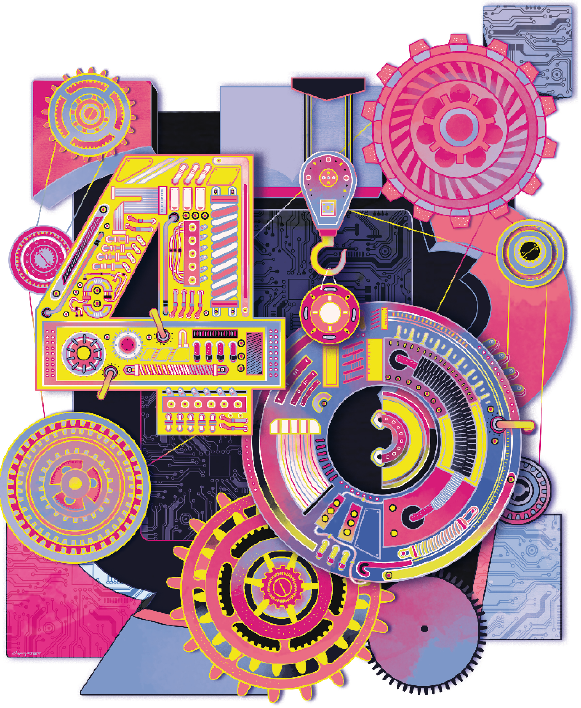Inland innovators


Hefei, at first sight, might not seem like a new incarnation of Silicon Valley.
Although, like many Chinese cities, Hefei has a large population, of nearly 8 million — double that of Berlin or Nairobi — the development of the city, which is the capital of the inland province of Anhui, has been overshadowed over recent decades by that of coastal cities.
Shanghai, just 400 kilometers away, and the Pearl River Delta area to the south, where Chinese tech giants such as Tencent and Huawei are based, have largely driven China’s technological effort.
Beijing, home to the Zhongguancun Science Park — China’s first science park, which dates back to the late 1980s — as well as internet giant Baidu and Xiaomi, the software and mobile phone titan, has also played a major role.
However, Hefei, whose economy has traditionally been built around agriculture and manufacturing, was chosen in June as one of the pilot cities for the central government’s Made in China 2025 strategy.
The number of such cities is likely to reach 30 this year, and one notable feature is the number of inland cities that are expected to play a major role in developing China’s technology base. Apart from Hefei, they include Wuhan, Hubei province, and Changsha, Hunan province, both in Central China, as well as Chengdu in Southwest China’s Sichuan province.
Hefei, which might be better known for its stinky fish and hairy tofu dishes that form part of hui cai, one of China’s eight famous cuisines, will be expected to play a major role in advanced manufacturing, new energy, new materials and biomedicine as well as voice recognition.
Yu Jing, the 34-year-old head of comprehensive planning and policymaking at the Economic and Technology Commission of Hefei, an economic development organization, says some of the perceptions of the city might be outdated.
She points to the phenomenal growth of the city over the past decade, with its industrial output increasing from 80 billion yuan ($12.1 billion) in 2006 to last year’s more than 1 trillion yuan, with strategic and emerging industries accounting for nearly a third (30.4 percent) of the output.
“If you include high-tech industries as a whole and not just the newer industries, that figure is more than 50 percent,” she says.
Over the past 20 years, the city has built a solid industrial base with a focus on the home appliance sector. Whirlpool, the US multinational, has its China headquarters in the city, and Chinese manufacturers Haier, Midea and Gree, the air-conditioner maker, all have their own major bases.
Yu, who was speaking in a meeting room at City Hall, says it is sometimes difficult to define what high tech means.
“In the past, what were considered high-tech industries are now considered traditional industries. This is particularly true of the home appliance sector, which has been an important industry in the city.”
The city is far from just reliant on the home appliance sector. One of its most exciting companies is iFlytek, the Shenzhen-listed company that is now a global leader in voice recognition technology. It is also home to JEE Automation Equipment, which makes assembly line systems for some of the world’s leading auto manufacturers.
Like many inland cities now, Hefei also benefits from a highly skilled workforce, including many graduates of local universities such as the University of Science and Technology of China, one of China’s top technology universities. The city also has an influx of returnees from the coastal cities who want a better standard of living.
Kris Hartley, a lecturer in the department of city and regional planning at Cornell University in the United States, says China’s inland provinces are uniquely placed to take advantage of China’s Made in China 2025 strategy.
“Inland cities have the opportunity to be emerging centers for innovation and entrepreneurship, in the same manner as tech-savvy cities of America’s inland such as Austin, Portland, Denver and Raleigh. Such cities can be attractive to young workers in terms of quality of life, offering lower cost of living, less congestion and, in some cases, healthier natural environments,” he says.
Hefei is also home to China’s only Institute of Advanced Technology outside a major metropolitan center.
The research institute is affiliated with the University of Science and Technology of China, and its other founding partners are the Anhui provincial government; the Chinese Academy of Sciences, which is China’s national science academy; and the Hefei municipal government.
It has 500 people working on research and development and around 700 interns from 30 countries. Since it was set up in 2012, it has patented around 240 products.
It is also home to around 60 incubator companies.
“In America there is Silicon Valley, and in Anhui we have IAT,” jokes Chen Lin, the 42-year-old vice-dean of the institution.
President Xi Jinping visited the institute in April 2016 as part of wider trip to the province and commented on how surprised he was to see Anhui, a province he remembered for agriculture and low-tech manufacturing, now at the cutting edge of technology.
The city is at the center of development of quantum communications, a technology that could ensure that no one ever gets cut off midcall on their mobile phone.
Pan Jianwei, a renowned quantum physicist in China, has done pioneering work in this area at the Hefei National Laboratory for Physical Science at the Microscale on the USTC campus.
His team is behind the creation of a 2,000-kilometer fiber-optic link that now connects Beijing and Shanghai and provides China’s quantum communications backbone.
“This has done much to change the image of the city,” says Chen. “There was an article in Nature magazine in the US that made the comment that Anhui, known for its hairy stinky tofu, is now at the cutting edge of one of the world’s most advanced technologies,” adds Chen.
Edward Tse, chief executive officer and founder of management consultancy Gao Feng Advisory, believes Hefei will be one of a number of provincial hubs that will take a lead in technology.
“We are going to see a lot of provinces emerge dominant and become important innovation hubs. This is a trend not just in China but in Asia, generally, too,” he says.
“I don’t think they are going to replace the big hubs, but it is more a case of a lot of blossoming everywhere.”
Thomas Leudi, a partner at management consultants AT Kearney in China, says there is no reason why the inland provinces should not emerge as new centers of excellence.
“It is not that everyone who works in the technology centers of Beijing or Shanghai is actually from there. If there are high-paying jobs in inland provinces, they can easily return there,” he says.
“New technologies like 3-D printing no longer need to be in a specific location. They can be in the cloud or anywhere.”
There is certainly no shortage of talent in Hefei. Of the 170,000 employees at the Hefei State High-Tech Industry Development Zone, one of China’s first group of national high tech zones created in 1991, 40 percent have a bachelor’s degree or above.
Industries in the zone, which covers 128 square kilometers to the west of the city, include those engaged in artificial intelligence, quantum communications, new energy vehicles and financial services.
Wang Bangchun, deputy director of the Party affairs office in the zone, says an increasing number of returnees are on the zone’s workforce.
“They are attracted back because of the opportunities here. We have many high-end top talent,” he says.
The zone certainly has status, being ranked sixth among the national high tech zones. It also had GDP growth of 11 percent, considerably more than the national economy, which grew by 6.7 percent last year.
Shen Hao, deputy director of the development research center of the Hefei State High-Tech Industry Development Zone’s administration committee, says Hefei becoming a pilot city for Made in China 2025 could be a game-changer.
The municipal government is offering a subsidy of 20 percent for companies to invest in research and technology as a result of the strategy.
“The strategy is not only pushing manufacturers to make more intelligent products, but it is also pushing them to be more intelligent in the way they produce these products,” he says.
“It also pushes local authorities to focus more on upgrading the industrial structure of their areas. The strategy makes a huge difference.”
Such a top-down approach to driving technological development has its critics, but Tse believes that it has proved to work time and time again in China.
“Sometimes it doesn’t work. Several years ago, there was a push toward solar energy and a lot of solar panel companies went bankrupt, but a lot of the time it actually does deliver,” he says.
“China designates areas for development, provides subsidies, invites entrepreneurs to come in, creates funds for startups, provides reasonable rental places and incubators and so on, and it tends to work. China has a pretty high batting average with this kind of thing.”
- China revises regulations on protection of new plant varieties
- China launches mandatory audits to bolster personal information protection
- Delivering social benefits
- Shenzhou XIX crew returns safely to 'beautiful, blue' Earth
- Ordinary work, extraordinary workers
- AI agent to improve international law services in Shanghai





































